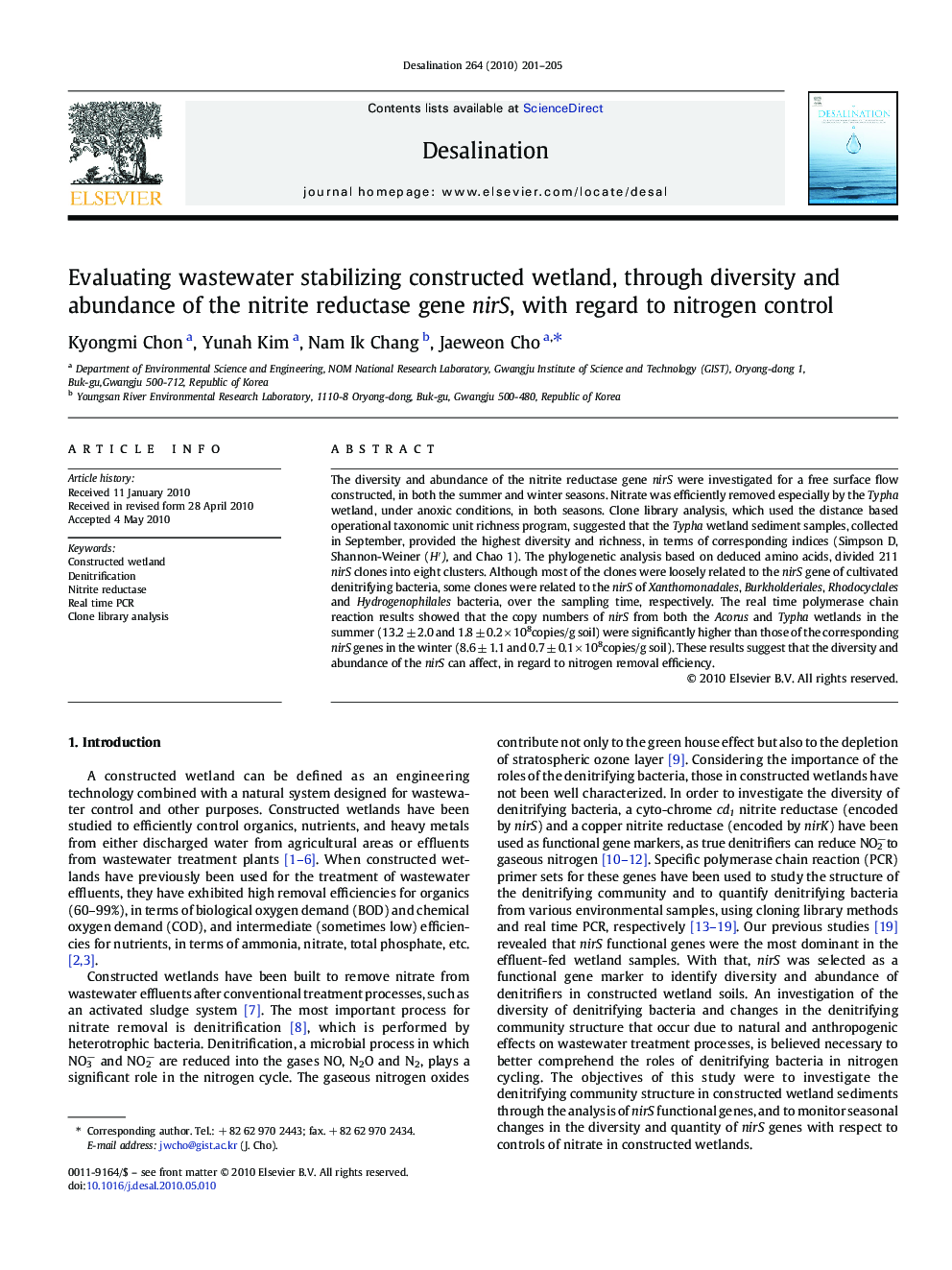| Article ID | Journal | Published Year | Pages | File Type |
|---|---|---|---|---|
| 625289 | Desalination | 2010 | 5 Pages |
Abstract
The diversity and abundance of the nitrite reductase gene nirS were investigated for a free surface flow constructed, in both the summer and winter seasons. Nitrate was efficiently removed especially by the Typha wetland, under anoxic conditions, in both seasons. Clone library analysis, which used the distance based operational taxonomic unit richness program, suggested that the Typha wetland sediment samples, collected in September, provided the highest diversity and richness, in terms of corresponding indices (Simpson D, Shannon-Weiner (Hâ²), and Chao 1). The phylogenetic analysis based on deduced amino acids, divided 211 nirS clones into eight clusters. Although most of the clones were loosely related to the nirS gene of cultivated denitrifying bacteria, some clones were related to the nirS of Xanthomonadales, Burkholderiales, Rhodocyclales and Hydrogenophilales bacteria, over the sampling time, respectively. The real time polymerase chain reaction results showed that the copy numbers of nirS from both the Acorus and Typha wetlands in the summer (13.2 ± 2.0 and 1.8 ± 0.2 Ã 108copies/g soil) were significantly higher than those of the corresponding nirS genes in the winter (8.6 ± 1.1 and 0.7 ± 0.1 Ã 108copies/g soil). These results suggest that the diversity and abundance of the nirS can affect, in regard to nitrogen removal efficiency.
Related Topics
Physical Sciences and Engineering
Chemical Engineering
Filtration and Separation
Authors
Kyongmi Chon, Yunah Kim, Nam Ik Chang, Jaeweon Cho,
